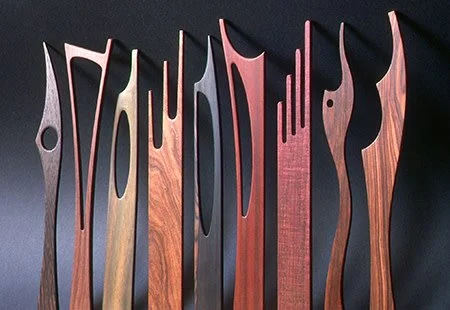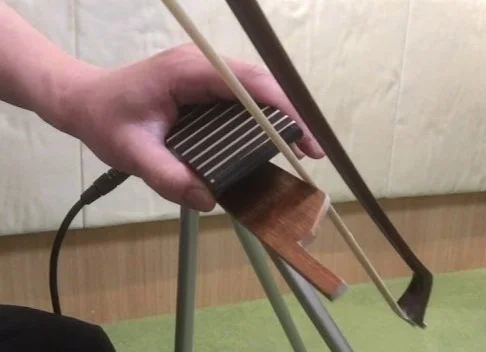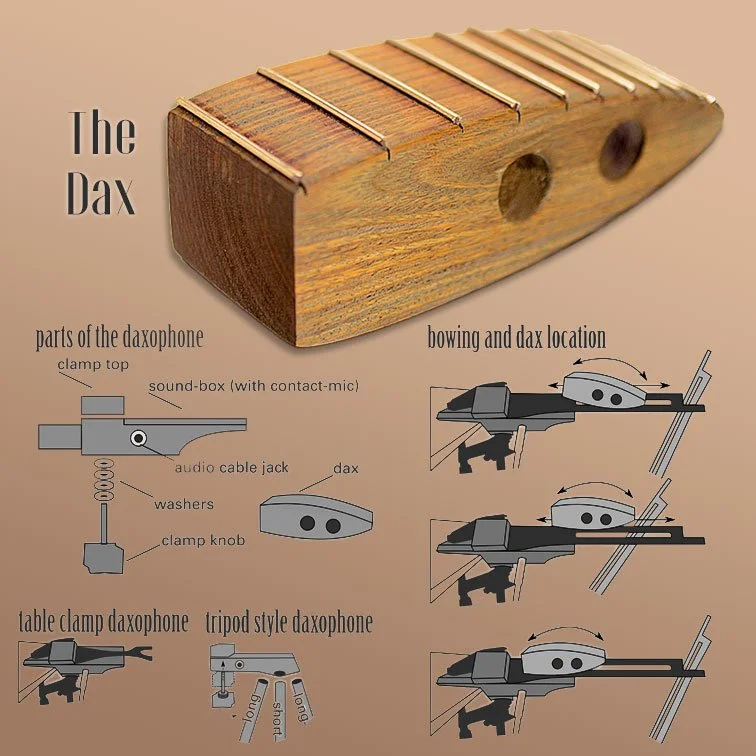A uniquely versatile friction idiophone instrument that produces sound through the vibration of wooden slats played by finger touch and bow, producing an extraordinary range of animal and vocal-style noises, its name derived from the German word Dachs, meaning badger. Developed in the 1980s by guitarist, experimental luthier and inventor, Hans Reichel, it first appeared on his 1987 album The Dawn of Dachsman, and then his next, Shanghaied on Tor Road: The World's 1st Operetta Performed on Nothing but the Daxophone. It eventually gained some attention with his work, Yuxo: A New Daxophone Operetta, leading to other artists’ interest, such as the composer Michael Hearst.
The instrument comprises different parts. A wooden piece called a tongue, which can come in a variety of shapes and sizes, but as standard – 330mm long, 30mm wide, and 5mm in height, fixed to a wooden block often attached to a tripod which holds one or more contact microphones. The block has a cavity carved with a chisel for the insertion of two contact microphones, and a snakewood soundboard laid on top with the contact microphones glued to it. Ebony and oak produce a mellower sound than light woods, often comical or human sounding.
Daxophone playing position
The wooden dax is sanded into a curved shape approximately 150 mm long and 50 mm tall, with a custom width tailored to the player's hands, shaped for frictionless pitch changing. One side of the dax is fretted according to a random logarithmic succession, while the other is left unfretted and covered with a sheet of cardboard for a mellower sound and to preserve the surface. Two large fingerholes are drilled through the sides.
Daxophone parts
Luthier Yuri Landman designed a simple-to-build daxophone for DIY workshops. Another luthier Daniel Fishkin, extended Reichel's original concept with different soundboards. Daxophone maker Richard van Hoesel created a curved soundplate, which significantly improves its ability to stay in contact with tongues as they are bent up and down by the dax and bow. Here are some demonstrations:
And here is a selection various specific works showing the range of the instrument, including those for guitar and daxophone by Hans Reichel, plus Oneohtrix Point Never, Micheal Hearst, and Uchihashi Kazuhisa:
Feel free to share anything in relation to the daxophone, in musical examples, or wider culture, such as from film, art, or other contexts in comments below.
You can also get in touch the contact page, and also visit us on social media: Song Bar Twitter, Song Bar Facebook. Song Bar YouTube. and Song Bar Instagram. Please subscribe, follow and share. New to comment? It is quick and easy. You just need to login to Disqus once. All is explained in About/FAQs ...
Song Bar is non-profit and is simply about sharing great music. We don’t do clickbait or advertisements. Please make any donation to help keep the Bar running:



